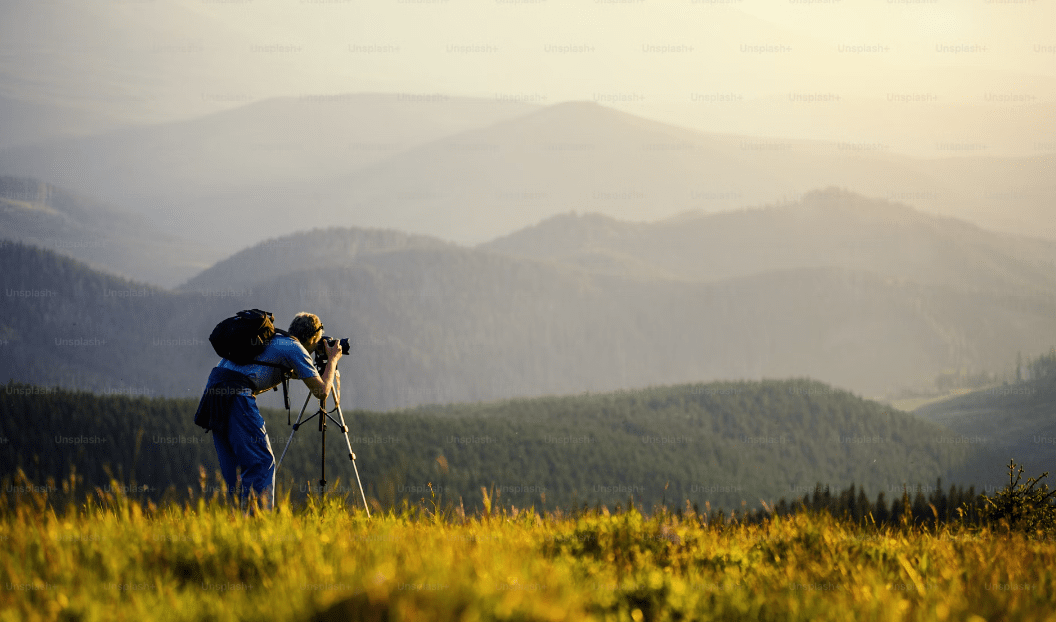
Outdoor photography can be both rewarding and challenging, as you’re working with the ever-changing natural environment. Whether you’re shooting landscapes, portraits, or wildlife, understanding how to adapt to the elements is key to capturing stunning images. In this guide, we’ll cover 15 essential tips for professional photographers looking to take their outdoor photography to the next level.
15 Tips for Professionals
- Understand the Golden Hour
- Use Natural Light to Your Advantage
- Plan Your Shots in Advance
- Use a Tripod for Stability
- Invest in the Right Lenses
- Master the Art of Composition
- Experiment with Depth of Field
- Incorporate Leading Lines
- Utilize the Rule of Thirds
- Adjust for Weather Conditions
- Use Filters for Special Effects
- Capture Movement in Nature
- Focus on Details
- Be Patient and Wait for the Perfect Moment
- Post-Processing Tips for Outdoor Photos
Table of Contents
Toggle1. Understand the Golden Hour
The golden hour is the period shortly after sunrise and before sunset when the sunlight is soft and diffused, creating a warm and flattering glow. This time is ideal for outdoor photography as it minimizes harsh shadows and provides a balanced light, perfect for portraits, landscapes, and nature shots.
2. Use Natural Light to Your Advantage
When shooting outdoors, natural light is your best friend. Always observe how the light falls on your subject and use it to your advantage. Avoid shooting under the midday sun, as the harsh light can create unflattering shadows. Opt for morning or late afternoon light for softer and more even exposure.
3. Plan Your Shots in Advance
Professional outdoor photography often requires pre-planning. Use apps to track weather conditions, sunrise/sunset times, and scout locations beforehand. This will help you anticipate the best lighting conditions and find the perfect spots to capture your vision.
4. Use a Tripod for Stability
When shooting in low-light conditions, such as during the golden hour or in shaded areas, a tripod is essential. It provides the stability needed to avoid camera shake, especially when using slower shutter speeds. This is crucial for landscape photography, where sharpness and clarity are key.
5. Invest in the Right Lenses
The right lens can make all the difference in outdoor photography. For landscapes, a wide-angle lens is ideal to capture the vastness of the scene. For wildlife or distant subjects, a telephoto lens allows you to zoom in without disturbing the scene. Prime lenses with wide apertures (f/1.8 or f/2.8) are great for capturing portraits with beautiful background blur.
6. Master the Art of Composition
Composition is one of the most important aspects of photography. Use techniques such as the rule of thirds, framing, and symmetry to create visually balanced and interesting photos. Pay attention to how elements within your frame interact and guide the viewer’s eye.
7. Experiment with Depth of Field
Depth of field can dramatically change the feel of your photos. Use a shallow depth of field (low f-stop number) to create a blurred background and emphasize your subject, or use a deep depth of field (high f-stop number) to keep both the foreground and background in sharp focus, which is common in landscape photography.
8. Incorporate Leading Lines
Leading lines are a powerful composition tool that guide the viewer’s eye through the image. These could be natural elements like rivers, roads, or tree lines. Incorporating leading lines adds depth to your photos and draws attention to the subject.
9. Utilize the Rule of Thirds
The rule of thirds is a simple yet effective guideline for composing photos. Imagine your image divided into nine equal parts by two vertical and two horizontal lines. Positioning your subject at the intersections of these lines creates a more balanced and visually appealing photo than centering the subject.
10. Adjust for Weather Conditions
Weather can make or break an outdoor photo shoot, but with the right techniques, you can turn even less-than-ideal conditions into creative opportunities. Overcast skies, for instance, can create soft, even lighting, while stormy clouds can add drama to landscapes. Always be prepared to adjust your settings based on the weather.
11. Use Filters for Special Effects
Filters can enhance your outdoor photography by adding creative effects or correcting lighting issues. A polarizing filter reduces glare and reflections, especially when shooting water or glass. Neutral density (ND) filters help you shoot long exposures during the day, perfect for capturing smooth water or motion blur.
12. Capture Movement in Nature
To add dynamism to your photos, experiment with capturing motion, such as wind blowing through trees or water flowing down a stream. Use a slow shutter speed to blur the movement, giving the photo a sense of fluidity and motion.
13. Focus on Details
Sometimes, the smallest details tell the biggest stories. Instead of always shooting wide, take time to focus on the details of your environment: dew on a flower, textures in rock formations, or patterns in the sand. Macro photography can help you zoom in on the intricate details of nature.
14. Be Patient and Wait for the Perfect Moment
Patience is key in outdoor photography. Whether you’re waiting for the perfect light, weather, or an animal to appear, being patient allows you to capture the scene at its most perfect moment. The best shots often come to those who wait.
15. Post-Processing Tips for Outdoor Photos
Even the best outdoor photos can benefit from some post-processing. Use tools like Adobe Lightroom or Photoshop to enhance colors, adjust exposure, and fine-tune the details. Remember not to over-edit—keep your edits subtle to preserve the natural beauty of your outdoor shots.
Mastering outdoor photography requires a blend of technical skill, creativity, and patience. By following these 15 tips, you can capture breathtaking images that showcase the beauty of the natural world. Whether you’re shooting portraits, landscapes, or wildlife, these techniques will help you elevate your photography to a professional level.
